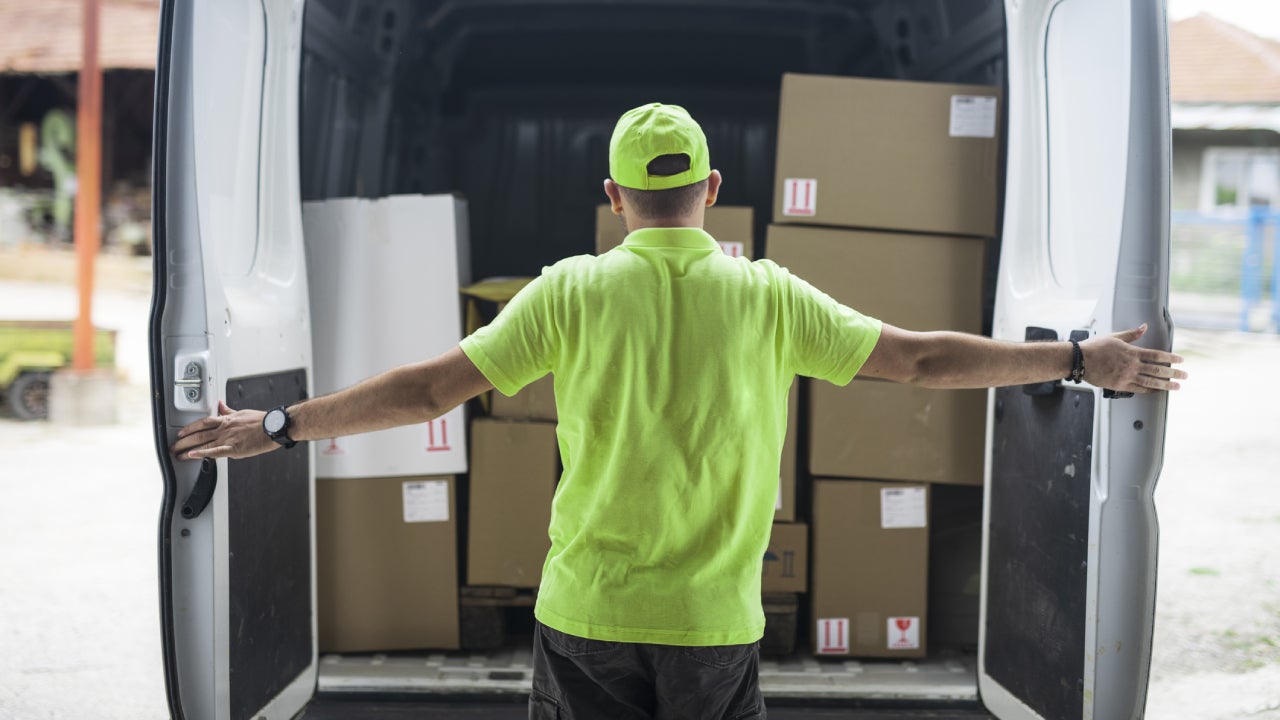Your car insurance company wants your data. Is it worth the discount?

When Seychelle Thomas signed up for a safe driving discount from her car insurance company, she didn’t expect to sign away her privacy.
A resident of Maryland, Thomas has auto insurance through Geico. Geico customers are eligible for safe driving discounts through DriveEasy, a telematics program that offers potential premium discounts to customers who agree to let Geico track their driving habits via a mobile app. But when Thomas went to enroll in the DriveEasy program, she encountered some concerning things.
“Geico wanted 24/7 location access,” she says. “Access to my audio, electronic and visual data, for some reason.” Uneasy about the level of data access required to sign up, she called a Geico customer service rep to clarify her concerns.
“When I raised concerns about the level of permissions they were requesting,” Thomas says, “It was kind of brushed off. Like, ‘Oh, this is normal.’ So I backed out on the second to last step.”
In recent years, insurance companies have touted telematics discounts like the one Thomas declined as a potential solution to the steep rate increases drivers have seen in the wake of the COVID-19 pandemic. According to Bankrate’s research, full coverage car insurance rates increased by an average of 20 percent from June 2022 to June 2024. Key factors behind these increases include inflation, rising repair costs and an uptick in serious and fatal accidents.
With insurance companies instituting across-the-board rate hikes, there’s a growing sense of injustice to which telematics — car insurance directly based on how an individual actually drives — seems like a perfect answer. But is it? For many drivers, the level of access to personal data that telematics requires in order to work feels intrusive and risky. And finding concrete answers about that data — why it’s needed, how it’s protected and what it might be used for — is surprisingly difficult.
The trust problem: Why many drivers don’t opt into telematics
In theory, telematics are an effective solution to rising rates. In a 2024 survey by Cambridge Mobile Telematics (CMT), the telematics service provider behind many major insurers’ usage-based apps, 92 percent of respondents either agreed or strongly agreed with the statement, “Every driver in the U.S. should pay insurance based on how safe they drive.”
Based on those responses, we might expect to see a rate of adoption for telematics products close to or even above 90 percent. After all, the core purpose of telematics is to allow insurers to base rates on how safe an individual driver is, rather than lumping them into a statistical class and charging them based on their age, their location and other factors outside of their control.
But in the same CMT survey, only 87 percent expressed a favorable view of usage-based insurance. Moreover, a 2022 study by TransUnion found that of drivers who were given the option to enroll in a telematics program, only 65 percent opted in. In the gap between the concept of equitable pricing and the reality of telematics programs, some loss of trust slips in, keeping drivers from enrolling in the very programs that promise them a fairer rate.
To understand what’s stopping people from signing up for telematics, we did a deep dive into the data these apps actually collect — and how it’s used.
What data do telematics apps collect?
A banner on Geico’s DriveEasy home page reads: “We measure what matters.” But “what matters” when it comes to auto insurance telematics is not transparently obvious.
According to the website, DriveEasy uses eight factors to calculate a driving score: distracted driving, braking and acceleration, cornering, smoothness, time of day, distance driven, route regularity, and weather and road conditions. These factors impact the insured participant’s premium. The driving score is applied 45 days after the start of the policy period, and rates are updated at each renewal if the driver continues to log their driving in the app.
Compared to other major insurers’ telematics apps, DriveEasy’s definition of “what matters” requires more extensive data collection, with eight separate factors going into the DriveEasy driving score. By comparison, Progressive’s Snapshot and State Farm’s Drive Safe & Save only track five factors each, while Allstate’s Drivewise program bases discounts on just three factors: harsh braking events, high speed events and late-night driving.
| Factor | Geico DriveEasy | Progressive Snapshot | State Farm Drive Safe & Save | Allstate Drivewise |
|---|---|---|---|---|
| Braking/acceleration | x | x | x | x |
| Phone use | x | x | x | |
| Speeding | x | x | x | |
| Time of day | x | x | x | |
| Mileage | x | x | x | |
| Cornering | x | x | ||
| Smoothness | x | |||
| Route regularity | x | |||
| Weather/road conditions | x |
But the individual factors used to calculate driving scores and discounts for telematics programs are just the tip of a large data iceberg — and they don’t spring out of telematics apps neatly packaged. In order to track a driver’s braking and speeding habits, for instance, telematics providers need to access geolocation data. Measuring driver distraction — a huge predictor of accident risk — means intimate access to your phone use.
In Geico’s official privacy policy, a disclosure mandated by California law, sheds light on the many categories of personal data which may be collected and used alongside driving data, including financial identifiers like bank account and credit card numbers, online search and browsing history, and IP address, location data and education or employment history.
Users of Allstate’s Drivewise app with questions about the data the app collects will be directed to the privacy statement of telematics service provider Arity, which states that in addition to geolocation data, Arity collections information including personal identifiers (e.g. name, Social Security number and IP address), demographic information including race and ethnicity, purchasing and consuming histories (or “tendencies”), browsing history, search history, audio and electronic information, and what Arity calls “inferences”: the key factors like braking, acceleration, cornering and speeding behavior on which telematics discounts are based.
In other words, when you download an insurer’s telematics app, you agree to have your driving tracked and absorbed into a vast cloud of data that paints a picture of you as an insurance consumer. Only a small portion of that data — inferences derived from more granular data points such as geolocation and vehicle data — will directly impact your insurance premium.
So where does the rest of the data go?
How do insurance companies use telematics data?
Michael DeLong, a researcher at the Consumer Federation of America (CFA), has been studying consumer protections for auto insurance telematics for some time. “Most states don’t have the laws or restrictions” on this data, he says, “so companies can collect all kinds of telematics data and do whatever they want with it.”
Geico’s privacy policy states that Geico uses customers’ personal information for “a variety of purposes,” from core business purposes such as processing applications and handling claims to market analysis, tailoring web and app content, fraud detection and “for other purposes as permitted by law or to which you consent.” On the DriveEasy FAQ page, Geico states that driving data is never used to access customers’ contacts, phone calls or messages; to report speeding violations to law enforcement; or to sell or share consumer data with third parties.
Those guardrails leave Geico with a lot of freedom to use customer data in ways that might not benefit policyholders, such as by raising premiums or placing customers in a less favorable rate tier. “In practice,” DeLong says, “if you don’t have any consumer protections on telematics data, your auto insurance rate could be going up, and going up for reasons that are beyond your control.”
We already give up a lot of data and privacy to corporations, and we shouldn’t be giving all of this information up to insurance companies. We want insurance to be used to accurately match rates to risk and to help consumers; we don’t want people and their information to become products.— Michael DeLong, Research and Advocacy Associate, Consumer Federation of America (CFA)
The state of telematics regulations
Most states have few to no restrictions on auto insurance telematics. California and New York stand out as the major exceptions, with a few states considering potential legislation that could impact telematics in the future.
Legal restrictions on telematics are strongest in California, where insurers can only base auto insurance rates on a limited list of factors, such as an insured’s driving record, years of experience and annual mileage. Those restrictions make it impractical for insurers to offer telematics programs in the state unless they’re based entirely on mileage, not safety data. California also has some of the strongest consumer data privacy protections of any U.S. state, making it a complicated landscape for telematics.
New York offers an example of strict regulations with more leeway for telematics: insurers are permitted to offer these programs, but their data use is reined in by a set of usage-based insurance guidelines that require all programs to be reviewed by the Department of Financial Services prior to approval. One key requirement of New York’s UBI guidelines is that insurers can’t use telematics data to negatively affect customers — in other words, telematics can only yield a discount in New York, not a rate increase.
Outside of New York and California, very few states have any legislation specifically regulating telematics. Some states, like Washington, require specific notification and consent for the collection of location data through telematics apps, while other states, like Montana, have considered legislation that would prevent insurers from making telematics adoption a condition for coverage. Telematics regulation is still in its infancy as policymakers catch up to the technology that makes the discounts possible.
Is telematics worth the risk?
The lack of consistent consumer protections raises concerns for many customers and advocates — but do the legal risks outweigh the potential benefits of enrolling in a telematics program?
Omri Ben-Shahar, a professor at the University of Chicago Law School and one of the leading legal scholars studying auto insurance telematics, says yes. In a 2023 article for the Journal of Legal Analysis, Ben-Shahar argues that the potential privacy risks associated with auto insurance telematics don’t pose a serious legal problem — and that, in fact, they may be a distraction from the “clear net social value” offered by these programs. Driving, he argues, is fundamentally not private; it’s a public act with public impacts that don’t require the same protections as other categories of personal data.
“When consumers join a usage based insurance [program],” he says, “the most likely result is that their premium will go down for the simple reason that their insurers track how their driving is becoming safer.” In other words, when drivers know that their insurers are tracking them — and that their future rates will be based on what the insurance company observes — they drive more safely. “Good drivers,” Ben-Shahar says, “have nothing to hide, and bad drivers — well, here’s an opportunity to trade away some marginal privacy interests for a plan that will reduce their likelihood of fatal collision by roughly 30 percent.”
To weigh the benefits of telematics against the risks, let’s take a closer look at the benefits proponents point to for usage-based insurance programs: increased safety and more equitable pricing.
Telematics can increase driving safety
A study conducted by the National Bureau of Economic Research from 2012 to 2016 found that drivers became approximately 30 percent safer during their telematics monitoring period. A similar study published in 2017 by researchers at the University of British Columbia and Purdue University gave more nuanced findings: while not all unsafe driving habits diminished during telematics monitoring, hard braking was reduced by 21 percent over a six-month period. The study also noted that young drivers and women were more likely to see improvements in driving safety compared to older drivers and men.
Telematics can result in fairer premiums
Just how much could telematics actually save you? The data varies, and insurers aren’t always open about the results drivers get. Allstate advertises the highest potential discount at 40 percent. “We think that’s the maximum statistic,” DeLong says — so don’t expect your premium to be cut in half by telematics.
Progressive, the only major insurer that shares its average telematics discount amount, reports an average savings of $231 per year for Snapshot enrollees, but cautions that “about 2 out of 10 drivers actually get an increase.” Soleymanian et. al’s study found that the average discount for customers is around 12 percent, while Cambridge Mobile Telematics reports that in 2024, 72 percent of telematics customers saved at least $100 on their premiums, with 21 percent saving over $300 per year. Just one percent of CMT users reported seeing their rates go up.
I use State Farm's Drive and Save telematics program. Because the device is in my car, it obviously assumes I'm the driver. But if my boyfriend is driving and I'm the passenger, I can go into that specific trip and set myself as a passenger so it doesn't ding me if I use my phone. Through the app, I can also pop into the FAQs where they answer questions like ‘Who has access to my data’ and ‘How long do you keep my data,’ etc.— Natasha Cornelius, Insurance Editor, Bankrate
However, concerns about pricing equity remain. For example, late-night driving — a factor tracked by three out of the four major insurer telematics apps — has the potential to introduce unintentional bias into telematics. Low-income drivers working night-shift jobs are more likely to regularly drive during hours flagged as “high risk” by auto insurance telematics. It’s a real dilemma for insurance companies trying to balance accurate risk calculations and fair pricing, DeLong says: “While driving at night, visibility is not as good, and people are less alert,” but using this metric to determine premiums “could also have really big impacts on people who are lower income and therefore especially on Black and Latino consumers.”
The bottom line: Transparency and consumer education are essential next steps
Telematics offers a unique one-two punch to the problem of rising auto insurance rates: in addition to delivering discounts to individual drivers, it has the potential to reduce unsafe driving across the board. With fewer accidents and claims, insurance companies might ease off on rate hikes.
But enrolling in telematics still requires a leap of faith. Technology often moves faster than the law, and as of 2024, state lawmakers, legal scholars and insurance companies are all playing catch-up, trying to grapple with the implications of the technology that allows insurers to base premiums directly on individuals’ driving behavior. The promise of telematics is there, but legal protections to ensure that it doesn’t introduce new risks to drivers haven’t yet materialized in most places.
What’s needed to protect consumers along the way? “Transparency,” says DeLong. The more information consumers have access to about how telematics works — the data that’s collected, how it’s used and how it impacts their premiums — the more willing they may be to opt in to such programs. Comprehensive data privacy laws and state regulations that require insurers to submit telematics programs for review and conduct studies to prevent unintentional bias may go a long way toward ensuring consumer protections for telematics as the industry grows.
You may also like


Car insurance after a DUI in Wisconsin


How does car insurance with telematics work?


